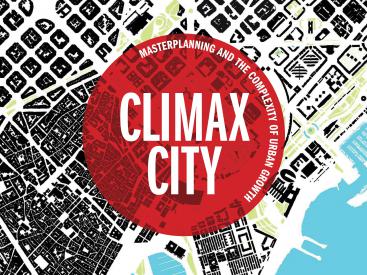Climax City: Masterplanning and the Complexity of Urban Growth
- Project date
- 01.10.2019
- Type
-
- Masterplanning
- Publication
- Research
- Location
- International
- Clients
- RIBA
- Associated team members
- Associated documents
David Rudlin and Shruti Hemani have spent the last five years collaborating on a series of large scale, some might say obsessive, hand drawn plans of cities across the world. Initially the idea was to produce an urban atlas, however, as the project progressed they developed a hypothesis based on what they were learning through the process of drawing these maps. Climax City, published by RIBA publishing is the result.
The starting point was the idea that, just as each part of the world has a climax vegetation, every human society has a climax urbanism. Spontaneous urban growth has given us some of our most beautiful towns and cities, built largely without planners or architects. However today the same process is likely to give us the slums of India the endless sprawl of the US or the corporate excess of Dubai.
Complexity theory suggests that self-organising development is the human equivalent of the termite mound – an emergent pattern that has been optimised over the centuries but never actually designed. In Climax City Rudlin and Hemani argue that this is too simplistic. Unlike termites, humans from the earliest civilisations, have sought to plan and regulate their cities. Human’s are able to dream of a better future and to put in place structures to regulate and shape their urban environments. All human settlements are planned to a greater of lesser extent but this doesn’t mean that they are not emergent structures. Planners may labour under the impression that they are somehow controlling the system, whereas in fact they are just one of the inputs.
This can all be read in the maps, the unplanned urban fabric giving way neighbourhoods shaped by a masterplan, fragments of plans never fully realised or swept away over time. The maps also show other things, the effects of modernist town planning, the fragmentation of inner city decline, the damage wrought by highway engineering and the sprawl of suburbia. All of these are elements of the modern climax state and Climax City seeks to chart the history of cities through these maps and the way in which planners have struggled to come to terms with forces beyond their control.
The book includes cities from across the world, from Tokyo to Detroit, Brasilia to St. Petersburg with a particular focus on India. The process by which the Climax City is created in different parts of the world is remarkably similar even if the results are very different. It is all much more complicated than most city planners recognise yet the solutions are surprisingly simple. This is a book that helps us to understand how to plan our cities more effectively.
Articles by David
Why Britain is so bad at building cities: Guardian Cities 11th April 2019
Good masterplanning knows where to draw the line: RIBA Journal 9th August 2019
The Wisdom of Cities? BD Column September 2019
Reviews
Lessons of the Master – Interview with David Rudlin, Simon Wicks, the Planner August 2018
Ombretta Romice Strathclyde University
Stephano Serafini International Journal of Bio Urbanism Italy (page 70) January 2019

